AWS Certified Developer - Associate
API Gateway
Integration Types mapping Templates Demo
In this guide, we explore how to leverage AWS API Gateway integrations and mapping templates with Lambda functions. You will learn how to retrieve data from an HTTP request body, work with path and query parameters, and ultimately send data back to the client. The demo uses a simple Task Manager API to simulate CRUD operations on tasks.
Creating the Task Manager API
To begin, create a REST API that will simulate a task management application:
- Click Create API and select REST API.
- Name your API (e.g., "Task Manager").
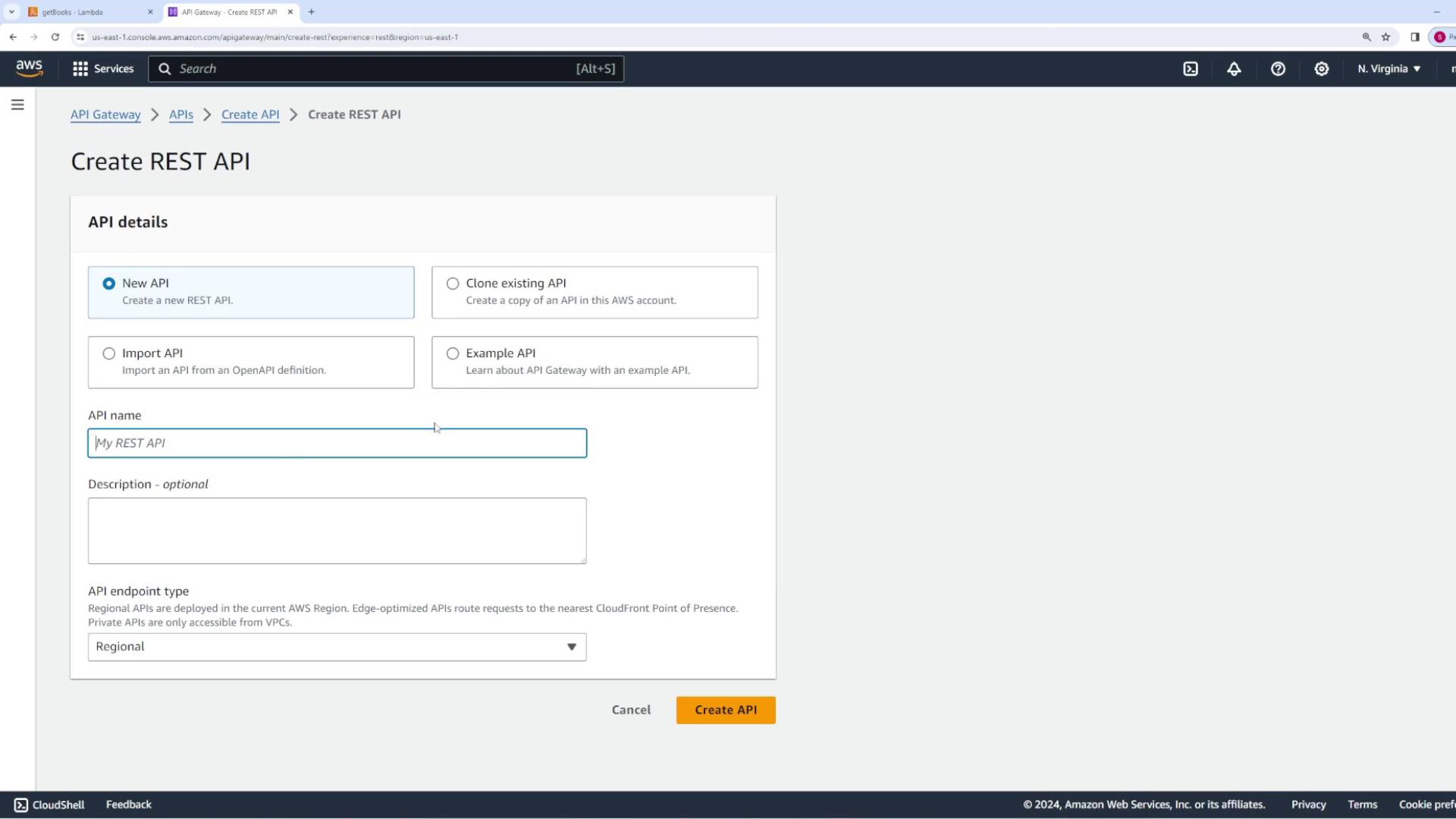
This API will host endpoints to create, retrieve, update, and delete tasks.
Creating the "Tasks" Resource and GET Method
Next, create a resource named /tasks:
- In the API Gateway console, create the new resource
tasks.
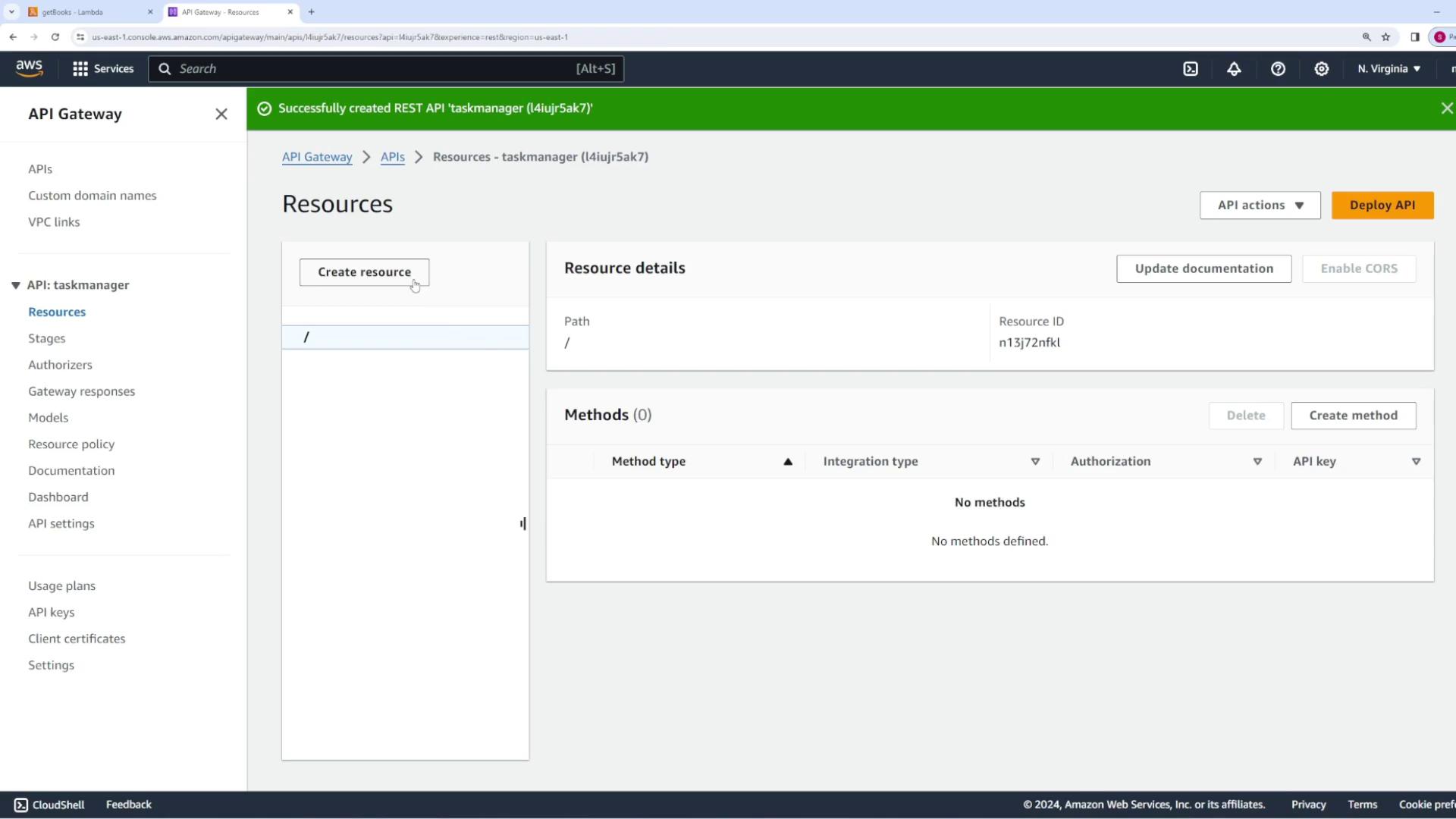
Then, add a GET method on the /tasks resource to retrieve a list of tasks:
Select the
GETmethod and choose the Lambda function integration.Create a Lambda function named
getTaskswith the following starter code:# Lambda function: getTasks def lambda_handler(event, context): return { "body": "Here is a list of all tasks" }Deploy the API (e.g., to a stage named
dev).

After deployment, copy the invoke URL and test your API client to verify that the GET method returns the expected task list.
Adding a Path Parameter for Task Details
To retrieve detailed information about a specific task, modify your API by adding a dynamic path parameter. The URL will follow the pattern /tasks/{id}, where {id} is the task identifier.
Under the
/tasksresource, add a child resource using a dynamic path variable (e.g.,{id}).Create a GET method for this resource and integrate it with a new Lambda function called
getTaskDetail.Use the following starter code for the Lambda function:
// Lambda function: getTaskDetail export const handler = async (event, context) => { const response = { body: "Getting detailed info on task", }; return response; };
Deploy these changes and test the GET method using a sample endpoint (e.g., /tasks/50). You should receive a response similar to:
{
"body": "Getting detailed info on task"
}
The API Gateway console will show the method execution details, confirming that the path parameter has been received.
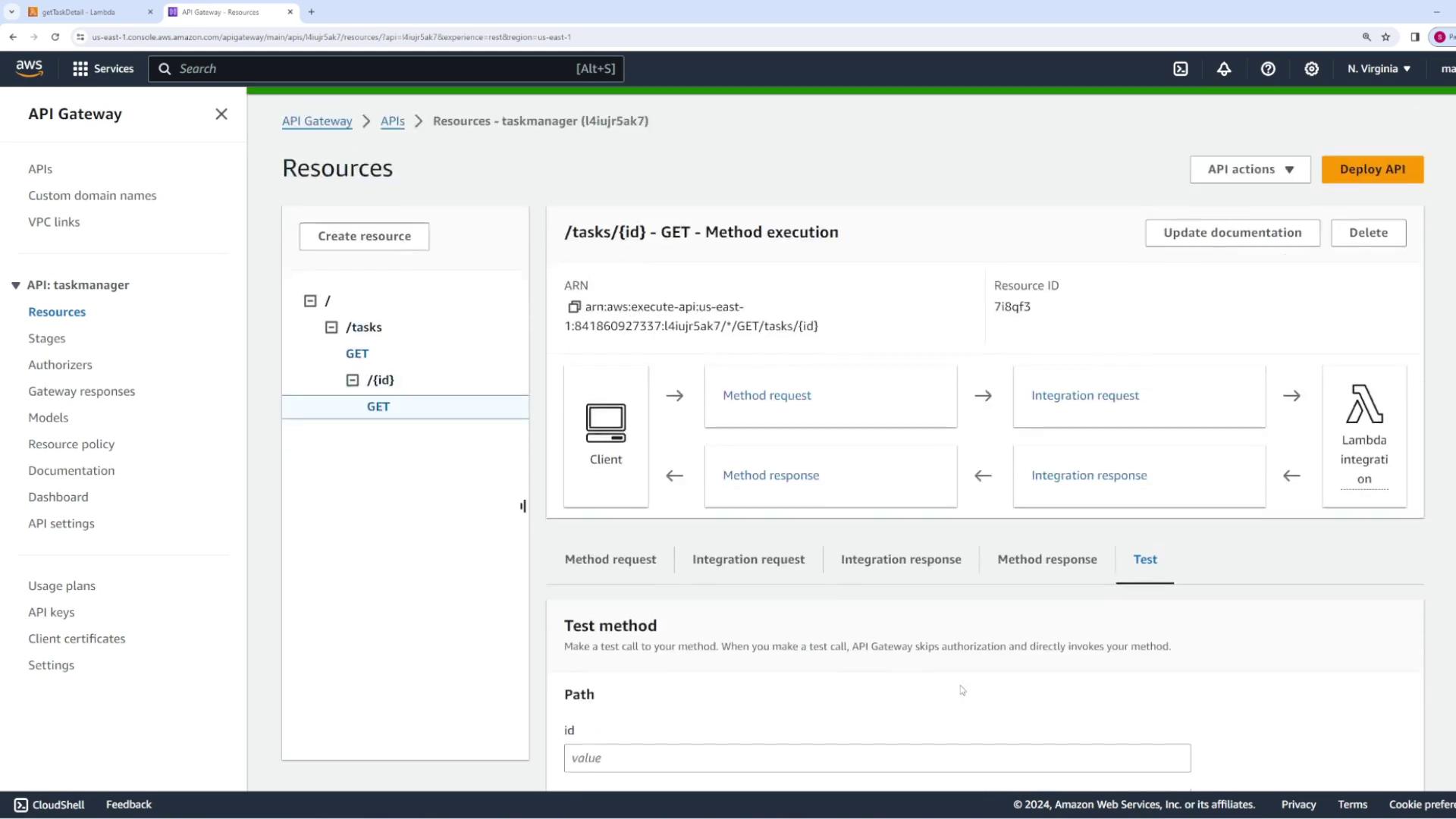
Enabling Lambda Proxy Integration for Passing Request Data
By default, the Lambda function does not receive the path parameter value. To forward the entire request as a structured event that includes path parameters, headers, query parameters, and more, enable Lambda proxy integration:
- In the method's Integration Request, set the integration type to Lambda Proxy Integration.
- Save and deploy the changes.
After testing, you will see that the event object now contains all the details of the HTTP request.
!!! note "Note" Remember that when using proxy integration, the Lambda function must return a properly formatted response. It should include properties such as statusCode and body (in JSON string format). For example:
export const handler = async (event, context) => {
const body = {
body: "Getting detailed info on task",
event: event
};
const response = {
statusCode: 200,
body: JSON.stringify(body)
};
return response;
};
Deploy and test again to verify that the event object includes all necessary information, such as the original URL, path parameters, and headers.

Using Mapping Templates to Access Path Parameters
If you prefer not to use full proxy integration, mapping templates allow you to extract only the parameters you need.
In API Gateway, navigate to the Integration Request of the GET method for
/tasks/{id}.Under Mapping Templates, add a new template for the content type
application/json.In the template editor, add the following mapping to forward all input parameters:
{ "myparam": "$input.params()" }
Deploy and test your setup. The Lambda function will now receive an event object with a property myparam containing the parameter details.
To isolate the task ID, adjust the template as follows:
{
"taskID": "$input.params('id')"
}
After deploying these changes, update your Lambda function code to utilize the passed parameter:
export const handler = async (event, context) => {
const response = {
body: `Getting detailed info on task id: ${event.taskID}`,
event: event,
};
return response;
};
Test with different task IDs (e.g., /tasks/28 or /tasks/31) to verify that the dynamic path parameter is correctly passed. A representative response should look like:
{
"body": "Getting detailed info on task id: 31",
"event": {
"taskID": "31"
}
}
Creating a New Task with POST
Now, implement the POST method to create a new task:
- Under the
/tasksresource, add a POST method. - Select AWS Lambda integration and create a new Lambda function called
createTask.
A simple version of the createTask Lambda function might be:
export const handler = async (event, context) => {
const response = {
body: "Created new task",
};
return response;
};
Deploy the API and test the POST method using an API client by sending a JSON payload similar to:
{
"task": "clean my room",
"priority": "critical",
"status": "completed"
}
To verify that the task details are correctly passed to your Lambda function, update the code to log the complete event:
export const handler = async (event, context) => {
const response = {
body: "Created new task",
event: event
};
return response;
};
After deployment, testing should yield a response that includes the HTTP request body within the event object:
{
"body": "Created new task",
"event": {
"task": "clean my room",
"priority": "critical",
"status": "completed"
}
}
Note on Request Body Passthrough
!!! note "Note" By default, if no mapping template matches the request content type (usually application/json), API Gateway automatically passes the HTTP request body to your Lambda function. To disable this behavior, change the Request Body Passthrough setting to "Never" and create your own mapping template. For example, to explicitly pass the entire JSON body, use:
{
"body": "$input.json('$')"
}
Deploy your API changes and test to ensure the Lambda function receives the correct request payload.
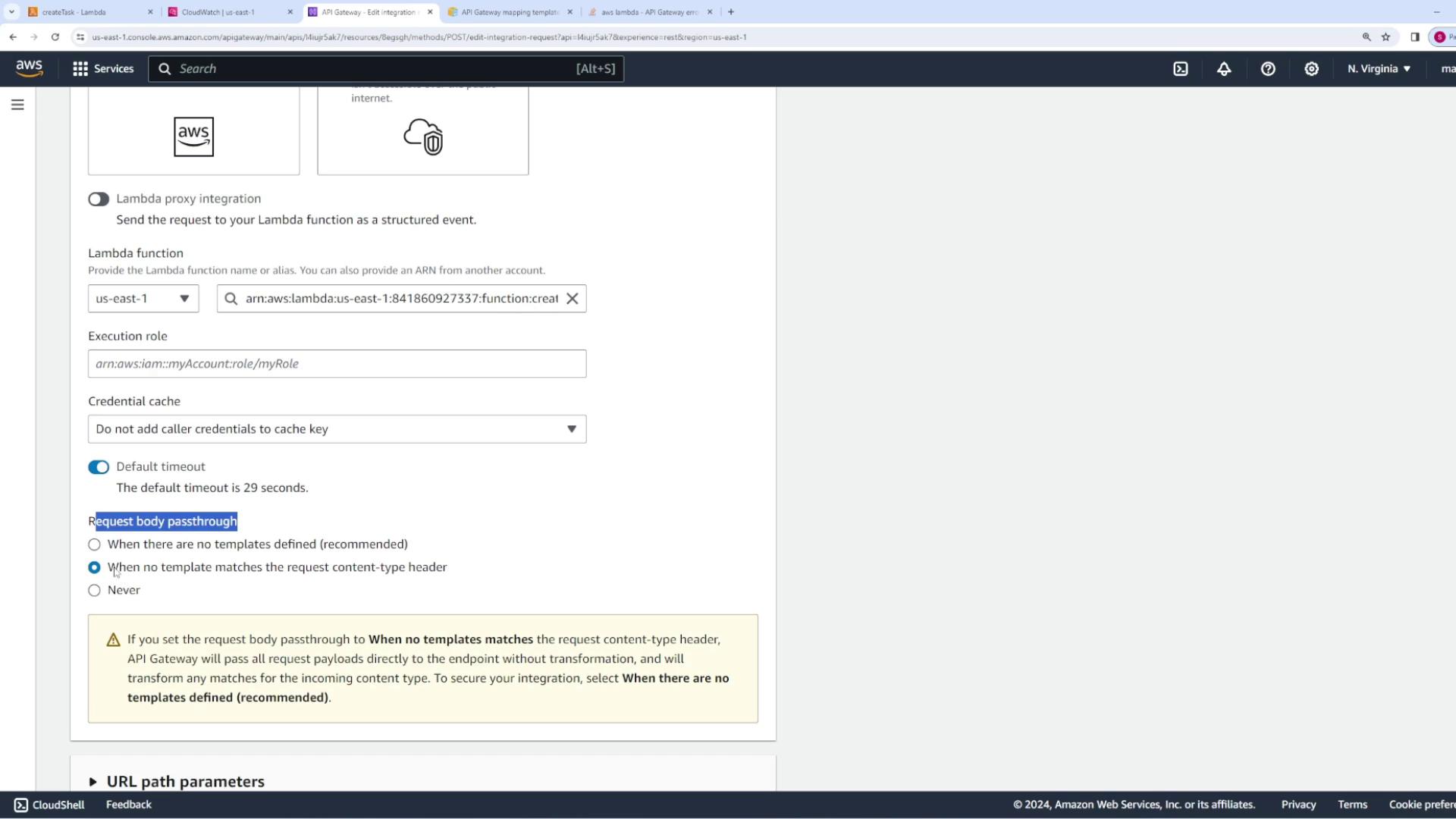
Working with Query Parameters
Lastly, let’s demonstrate handling query string parameters. For the GET tasks endpoint, you might support features such as filtering or sorting via query parameters. For instance, a client might request /tasks?sort=asc&status=completed to get a sorted, filtered list of tasks.
By default, the GET method may not forward these parameters unless a mapping template is defined. To capture query parameters, update the Integration Request mapping template as follows:
{
"myparams": "$input.params()",
"sort": "$input.params('sort')",
"status": "$input.params('status')"
}
Deploy these changes and test the endpoint using a request URL with query parameters. Your Lambda function should now receive an event object with properties for sort and status. An example response might be:
{
"body": "Here is a list of all tasks",
"event": {
"myparams": {
"path": [],
"querystring": "sort=asc, status=completed",
"header": {
"Accept": "*/*",
"Accept-Encoding": "gzip, deflate, br",
"Host": "14iujr5ak7.execute-api.us-east-1.amazonaws.com",
"Postman-Token": "2eec9f9b-886f-4543-9b03-9e49f9074180",
"User-Agent": "PostmanRuntime/7.36.3",
"X-Amzn-Trace-Id": "Root=1-660a2cac-6840aac7561cdce2725070f",
"X-Forwarded-Port": "443",
"X-Forwarded-Proto": "https"
}
},
"sort": "asc",
"status": "completed"
}
}
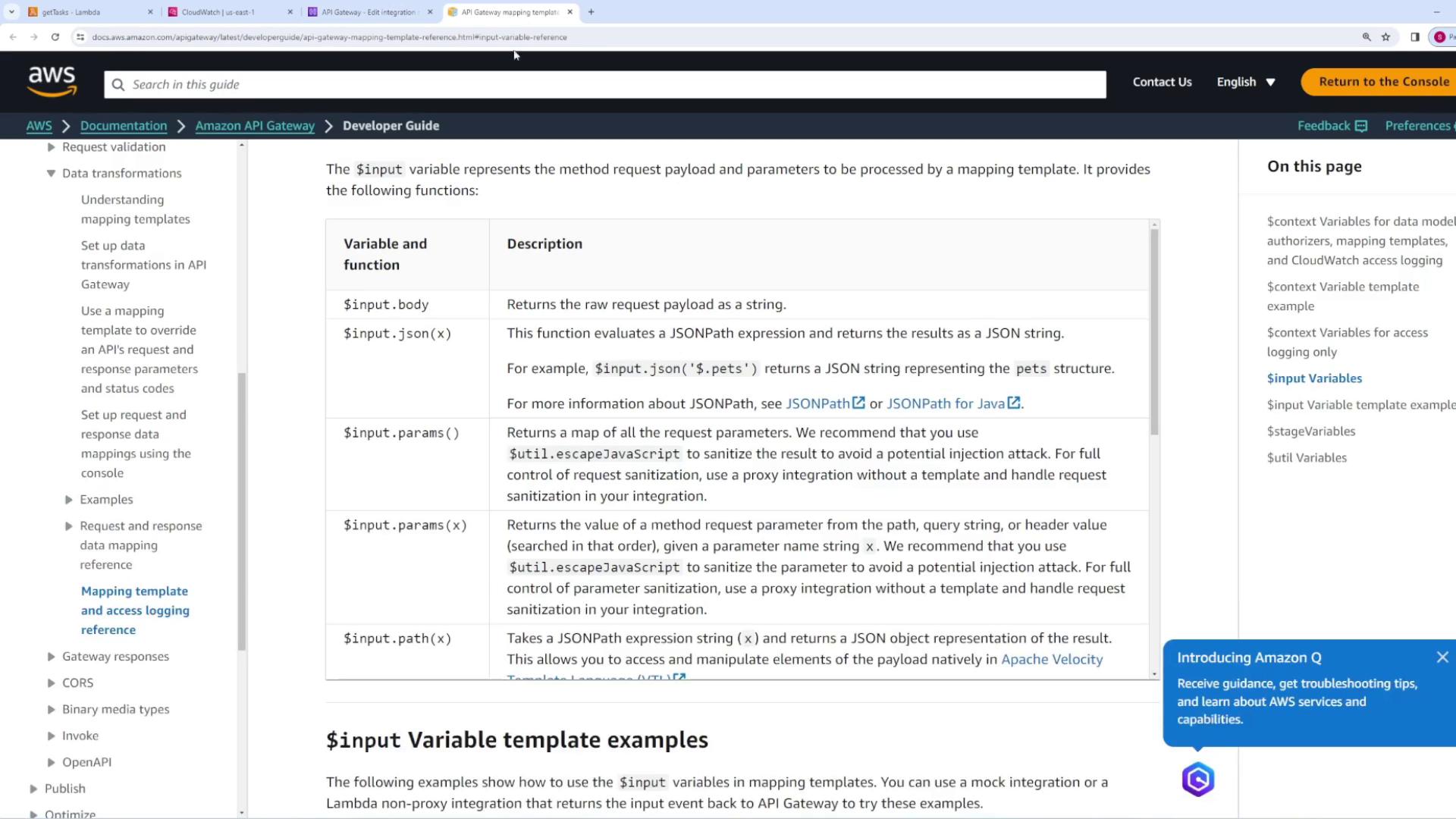
Summary
In this guide, we covered:
- How to create a REST API for a Task Manager application using AWS API Gateway.
- Setting up GET methods for both static resources and dynamic path parameters.
- Enabling Lambda Proxy Integration and adjusting your Lambda function response format.
- Using mapping templates to extract path parameters, request bodies, and query parameters.
- Implementing a POST method to create new tasks and forward HTTP request data to your Lambda function.
Each configuration change was followed by deployment and testing, ensuring that your Lambda functions correctly receive the required data.
Happy coding!
Watch Video
Watch video content